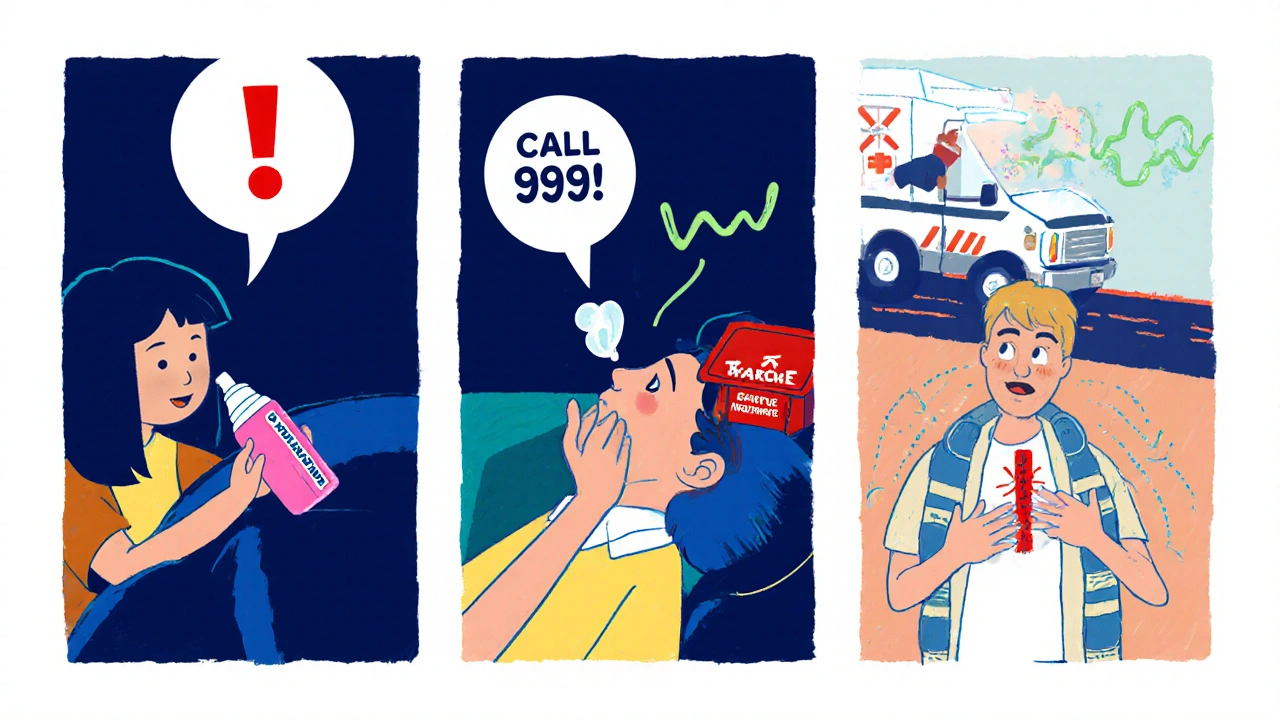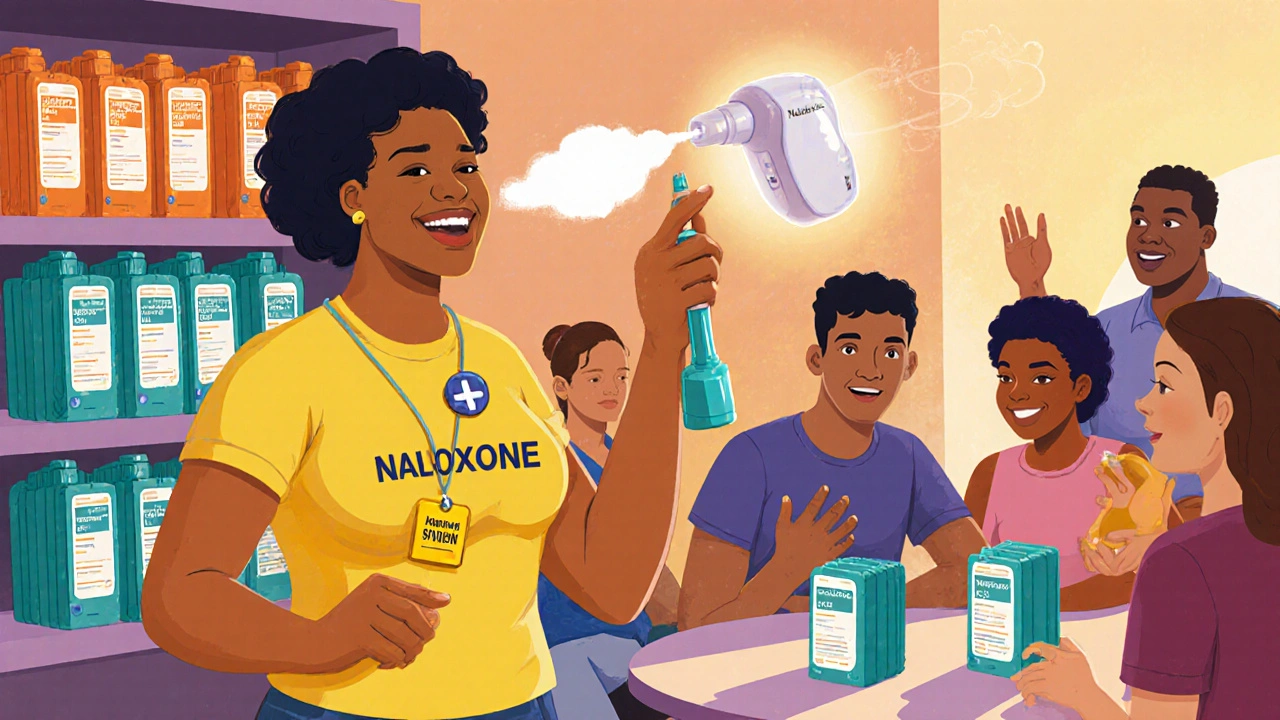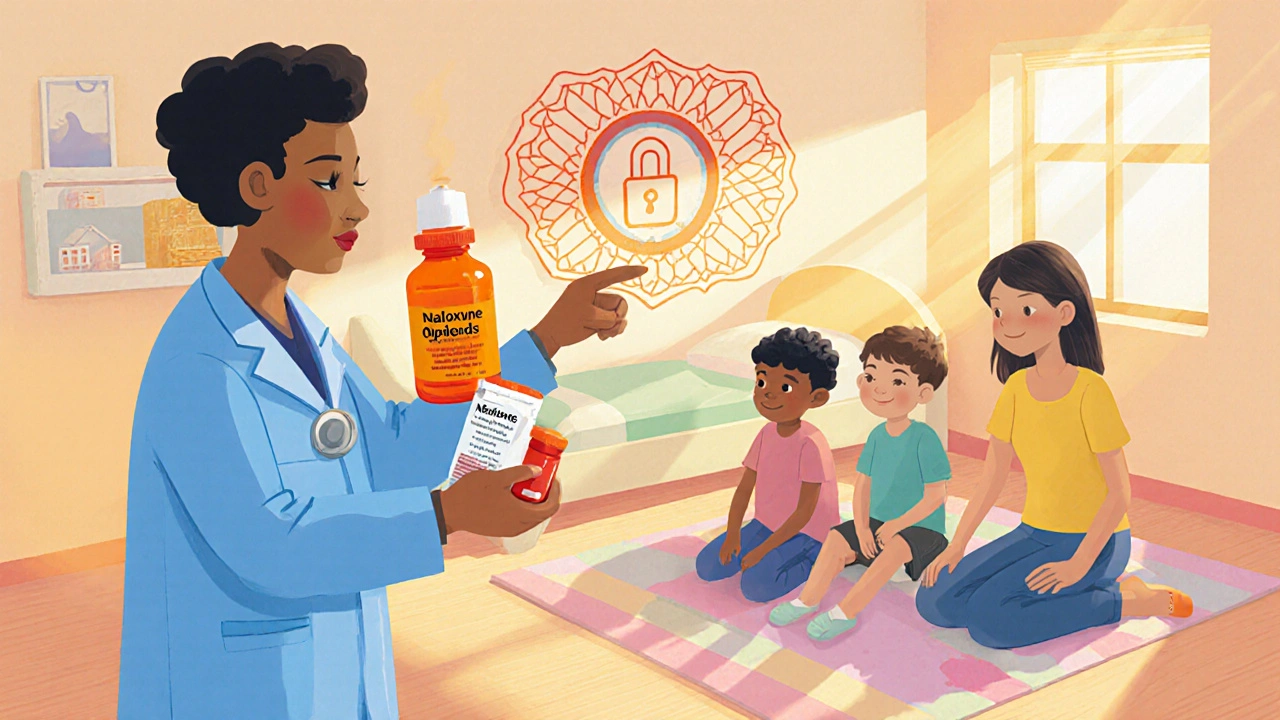Naloxone Readiness Calculator
Your Naloxone Readiness Assessment
How This Works
Based on CDC guidelines and American Academy of Family Physicians recommendations, this calculator determines the optimal number of naloxone doses needed for your situation. It accounts for:
- 2 doses per high-risk patient (per AAFP 2021 recommendations)
- Extra dose for rural settings (due to longer EMS response times)
- Formulation-specific considerations (shelf life, cost, ease of use)
Recommended Naloxone Readiness
Pro Tip: The National Safety Council advises setting calendar reminders for naloxone kit replacement 18 months after purchase. Naloxone's shelf life is typically 2 years for most formulations.
When a patient is prescribed opioids, the biggest hidden danger isn’t the pain relief - it’s the risk of an overdose. A well‑crafted naloxone readiness plan turns that risk into a manageable safety net.
What is Naloxone and Why It Matters
Naloxone is a life‑saving opioid antagonist that quickly blocks mu‑opioid receptors, reversing respiratory depression within 2-5 minutes. Developed in 1961 and FDA‑approved in 1971, it has moved from hospital‑only use to over‑the‑counter availability, most notably the 2023 NARCAN® nasal spray approval. Because it restores breathing without affecting non‑opioid overdoses, it can be administered safely even if the person isn’t actually overdosing.
Understanding Opioid Overdose: Signs and Timeline
Opioid Overdose typically presents as unresponsiveness, shallow or irregular breathing, and pinpoint pupils. Oxygen saturation can dip below 90 % in under three minutes, making a rapid response critical. The American Heart Association notes that brain injury risk rises sharply after one minute of hypoxia.
Key Components of a Naloxone Readiness Plan
- Immediate Access: Kits must be reachable within 30 seconds of recognizing an overdose. Wisconsin’s “Dose of Reality” program mandates one 4 mg nasal spray or two 0.4 mg vials per potential event.
- Education & Training: 20 minutes of hands‑on practice yields >90 % correct technique (National Safety Council). Annual refreshers keep proficiency above 85 %.
- Calling Emergency Services: 911 should be dialed the moment overdose is suspected - naloxone buys time, it doesn’t replace professional care.
- Rescue Breathing: Begin within 1 minute; one breath every 5 seconds with a head‑tilt‑chin‑lift.
- Monitoring: Observe the patient for at least 2-3 hours because naloxone’s duration (30-90 min) is often shorter than that of potent opioids like fentanyl.
Choosing the Right Formulation
| Formulation | Typical Dose | Cost (US$) | Shelf Life | Key Advantages |
|---|---|---|---|---|
| Intramuscular injection (0.4 mg vials) | 2 vials (0.8 mg) per event | 25‑40 per vial | 2 years | Low cost, widely stocked in clinics |
| NARCAN® nasal spray (4 mg) | 1 spray (4 mg) - repeat if needed | 130‑150 (OTC) | 2 years | Easy, needle‑free, OTC |
| Evzio® auto‑injector (0.4 mg) | 1 device (0.4 mg) - repeat if needed | ≈ 3,200 | 3 years | Designed for layperson use, audible cues |

Building a Clinic‑Level Readiness Plan
Primary‑care settings should stock at least two doses per high‑risk patient, as recommended by the American Academy of Family Physicians (2021). Rural clinics need extra kits because EMS response averages 23.4 minutes versus 8.7 minutes in urban areas.
- Inventory Log: Track lot numbers, expiration dates, and dispensing dates.
- Prescription Integration: Co‑prescribe naloxone for any patient receiving >50 morphine milligram equivalents per day. The CDC’s 2022 guideline cites 86.7 % of opioid deaths involve individuals not on a prescription, so broader distribution is justified.
- Patient Counseling: Discuss stigma, demonstrate use, and provide written quick‑step cards.
Workplace and Community Implementation
Employers with >15 staff should place kits within 100 feet of high‑risk zones (National Safety Council, 2023). Community programs aim for at least one kit per 50 residents; most areas fall short at one per 127 residents, highlighting a distribution gap.
Key steps for non‑clinical settings:
- Conduct a risk assessment (e.g., presence of opioid‑prescribing staff, nearby high‑use neighborhoods).
- Secure storage that remains unlocked during work hours but protected from theft.
- Designate a “Naloxone Champion” to lead training and kit checks.
- Partner with local pharmacies or health departments for standing orders - 47 states now have such laws, with 33 offering statewide standing orders.
Common Pitfalls and How to Avoid Them
| Issue | Impact | Solution |
|---|---|---|
| Using expired kits | Reduced potency, failed reversal | Set calendar reminders for 18‑month replacement. |
| Insufficient dosage for fentanyl analogs | Partial reversal, renarcotization | Prepare extra 4 mg spray or multiple 0.4 mg injections. |
| Stigma preventing discussion | Low uptake, increased deaths | Normalize conversation as a standard safety precaution. |
| Skipping rescue breathing | Brain injury despite naloxone | Include breathing drills in every training session. |

Measuring Success: Metrics Your Plan Should Track
- Kit Distribution Count: Total kits placed in clinic, workplace, and community.
- Administration Events: Number of times naloxone was used, broken down by formulation.
- Outcome Rate: Percentage of administrations that resulted in restored breathing without immediate EMS arrival.
- Training Completion: % of staff/patients who have completed the 20‑minute hands‑on module.
Washington State’s 2022 report showed 20 % reversal success for 142 k kits distributed, while a Reddit thread in 2023 highlighted a 62 % self‑reported reversal rate when kits were at home. Tracking both formal and informal data gives a realistic picture.
Step‑by‑Step Quick‑Start Checklist
- Identify high‑risk patients or settings.
- Order at least two doses per individual (nasal spray or IM vials).
- Log each kit’s expiration date; set reminders for replacement.
- Conduct a 20‑minute hands‑on training session covering recognition, 911 call, naloxone administration, and rescue breathing.
- Print and post a one‑page “Naloxone Ready” flowchart near every kit.
- Document every administration event in a simple log (date, time, dose, outcome, follow‑up EMS).
- Review logs monthly; adjust inventory and training frequency as needed.
Future Outlook: What’s Coming Next?
The FDA’s draft guidance (Sept 2023) hints at longer‑acting intranasal formulations (60‑120 min), which could bridge the gap between naloxone’s short action and fentanyl’s potency. Federal funding continues to grow - the 2023 Consolidated Appropriations Act dedicated $17 million specifically for naloxone distribution.
However, experts warn that naloxone alone won’t curb overdose deaths unless paired with broader treatment access. Only 18.5 % of Americans with opioid‑use disorder receive medication‑assisted treatment (MA T). A comprehensive plan therefore blends naloxone readiness with referral pathways to MA T, mental‑health services, and harm‑reduction education.
How many naloxone doses should a patient keep at home?
The American Academy of Family Physicians recommends at least two doses (either two 4 mg nasal sprays or four 0.4 mg vials) per high‑risk patient. Rural patients often keep a third dose due to longer EMS response times.
Can I use a nasal spray on someone who isn’t breathing?
Yes. The spray works whether or not the person is actively breathing. It simply blocks opioid receptors, allowing the body’s natural breathing drive to resume once the opioid effect is removed.
What should I do after giving naloxone?
Call 911 immediately, start rescue breathing, and stay with the person for at least 2‑3 hours. Be prepared to give a second or third dose if breathing becomes shallow again, especially with fentanyl exposure.
Is naloxone covered by insurance?
Most major insurers cover the prescription form of naloxone. The over‑the‑counter nasal spray may require a copay, but many state Medicaid programs reimburse it fully under standing‑order statutes.
How often should I replace my naloxone kit?
Naloxone’s shelf life is about 2 years for most formulations. The National Safety Council advises checking expiration dates every six months and replacing kits that are older than 18 months to ensure potency.


Hey folks, thanks for putting together such a practical guide-this is exactly the kind of resource we need to keep our communities safe. I love the step‑by‑step checklist; it makes it super easy to train staff and family members alike.
Let’s keep the momentum going and share these plans far and wide!
Look, the guide is decent but it glosses over the cost barrier of NARCAN-most clinics can’t swing $150 per spray without grant money. You also need clearer ammo on state standin‑order laws; not everyone reads the fine print. Stop sugar‑coating the logistics.
Good point about funding; many rural sites rely on state subsidies and local charities to stock kits.
From an ethical stewardship perspective, deploying naloxone without concurrent addiction treatment pathways is tantamount to a Band‑Aid solution on a systemic wound. The pharmacodynamics of fentanyl analogs often outpace the standard 4 mg nasal formulation, necessitating a polypharmacy approach that includes higher‑dose auto‑injectors. Moreover, the regulatory landscape mandates that institutions adopt a risk‑mitigation framework aligned with CDC’s opioid prescribing guidelines. Failure to integrate comprehensive patient counseling violates the principle of informed consent, especially when stigma impedes open dialogue. Clinicians must also document the chain of custody for each kit to satisfy audit requirements under HIPAA‑compliant data handling protocols. Supply chain logistics should be scrutinized quarterly, given the volatility of raw material pricing for generic naloxone. Ultimately, a multidisciplinary coalition-pharmacy, primary care, behavioral health, and emergency services-must co‑author the readiness plan to ensure sustainability. Ignoring these layers turns a well‑meaning initiative into a hollow gesture.
Surely the “multidisciplinary coalition” is just a buzzword in the white‑paper lobbyists love to push. The real question is who’s watching the watchmen when the kits sit on a shelf gathering dust. I suspect a shadow network of profit motives lingers behind the glossy charts. Anyway the plan feels like a diversion from the deeper agenda of population control masked as public health. Stay vigilant.
Thank you for highlighting the importance of timely administration and proper documentation. A structured training module, complemented by simulation drills, can significantly boost confidence among lay responders. I recommend incorporating a brief debrief after each drill to capture lessons learned and reinforce best practices 😊. Consistent reinforcement ensures that the readiness plan evolves with emerging opioid trends.
Oh great, another checklist-just what the world was missing.
Maybe we should just hand out the kits and hope for the best
I feel the weight of every missed overdose when I read these stats-they’re heartbreaking. The community deserves more than just a kit; they need hope and compassion. Let’s champion these plans as lifelines, not just paperwork. Together we can turn despair into action.
Valid point the emotional appeal drives adoption but we also need metrics to prove efficacy
I appreciate the balanced perspective on both logistical challenges and the human impact. For clinics looking to implement this, starting with an inventory audit and a simple training calendar can streamline the process. Additionally, partnering with local harm‑reduction groups can expand outreach beyond the clinic walls. Keep up the great work, the details matter.
Wow, that’s like a lifeline thrown into a stormy sea! I can already picture the relief on a family’s face when the spray works like magic. Seriously, this guide is a beacon in the darkness, and I’m all in for spreading the word. Let’s make it viral, folks!
Our nation’s resilience depends on protecting every citizen, especially when the opioid crisis threatens our streets. It’s imperative that we back these readiness plans with patriotic funding and local law‑enforcement support. By standing together we fortify our communities against this silent enemy.
While I respect the call to action, it’s essential to balance enforcement with personal freedoms. Over‑policing can alienate the very people we aim to help. A collaborative approach that includes community input will yield sustainable results.